5 Biggest Training Mistakes Climbers Make
1 – First up – Training fingerboard or campus at the END of the session.
This is possibly the number one mistake that we see beginner and intermediate climbers make! But why do we do see this? Well, what happens is that they do a nice long climbing session (boulder or routes) and then right at the end, once pretty tired, they hop on a campus board or fingerboard to try and work their strength. Don’t! The trouble with this is that you are creating two main problems: One is that they’re working at the very highest intensity you can manage whilst fatigued on soft tissues structures, so the injury risk increases.
The other issue is that when tired, we are unable to operate at our true maximal force potential. Put simply, we are not going to overload the muscle tissues in an appropriate way to bring about the best strength gains.
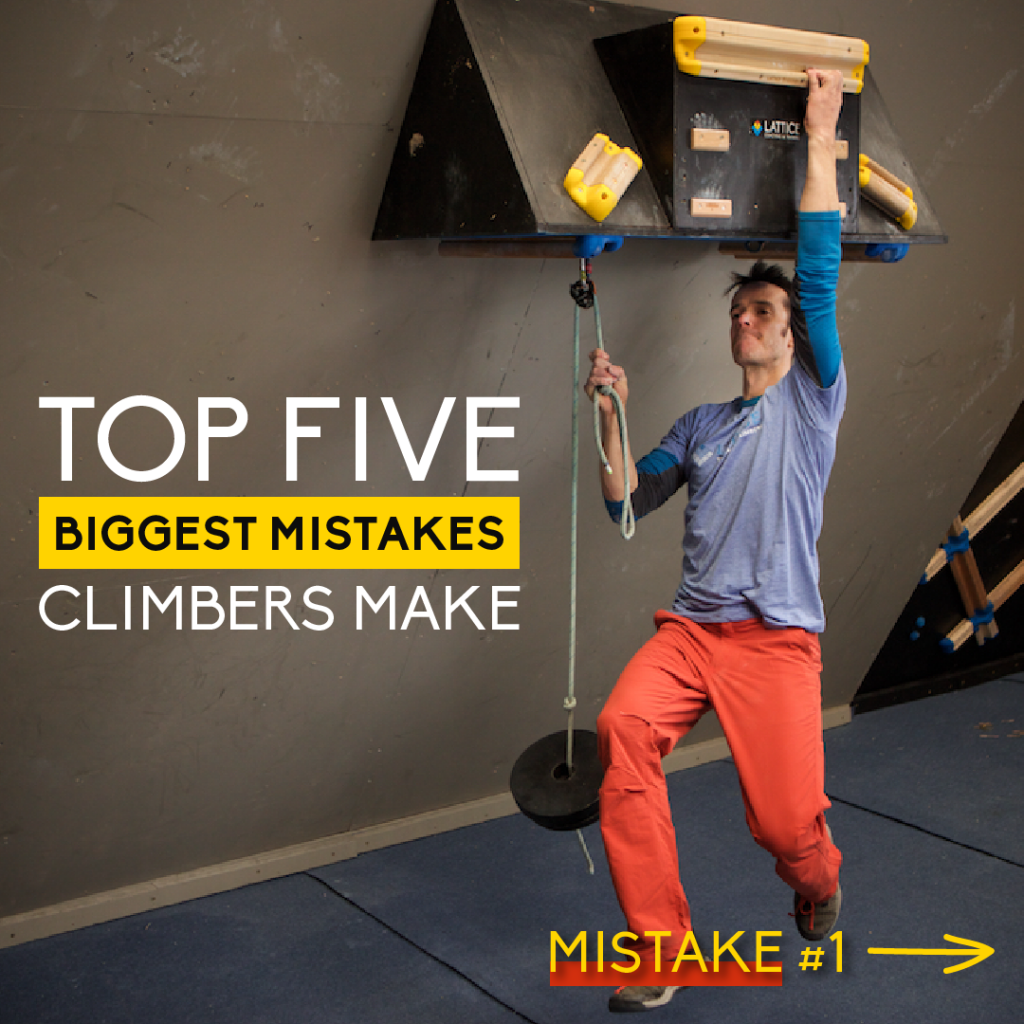

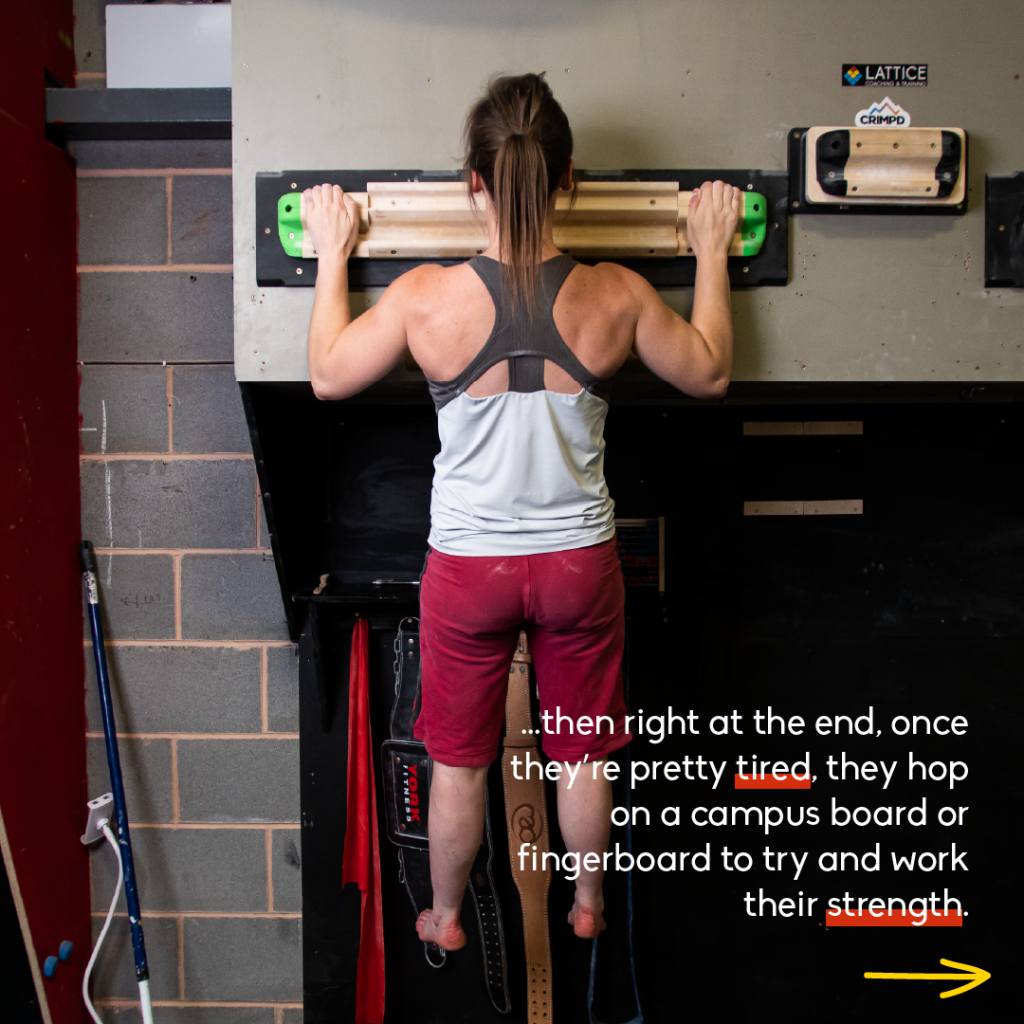
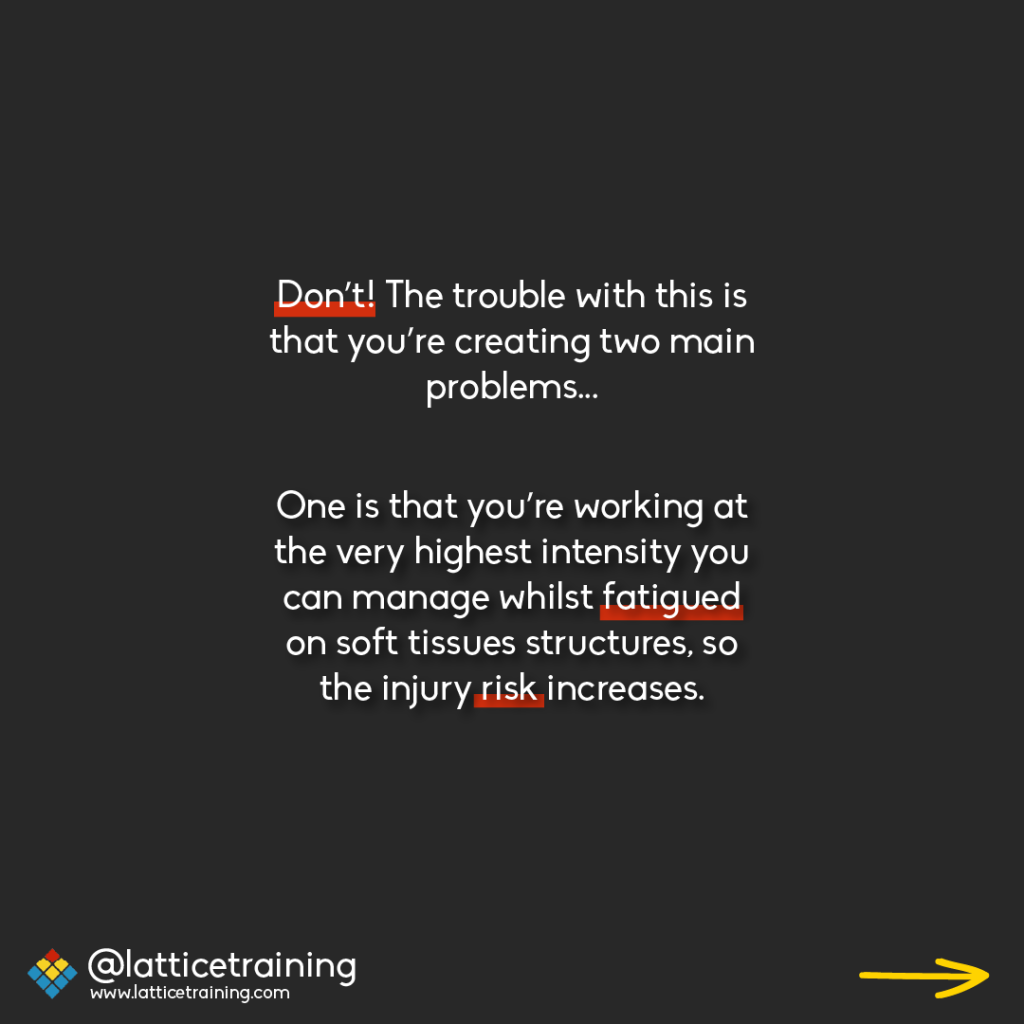
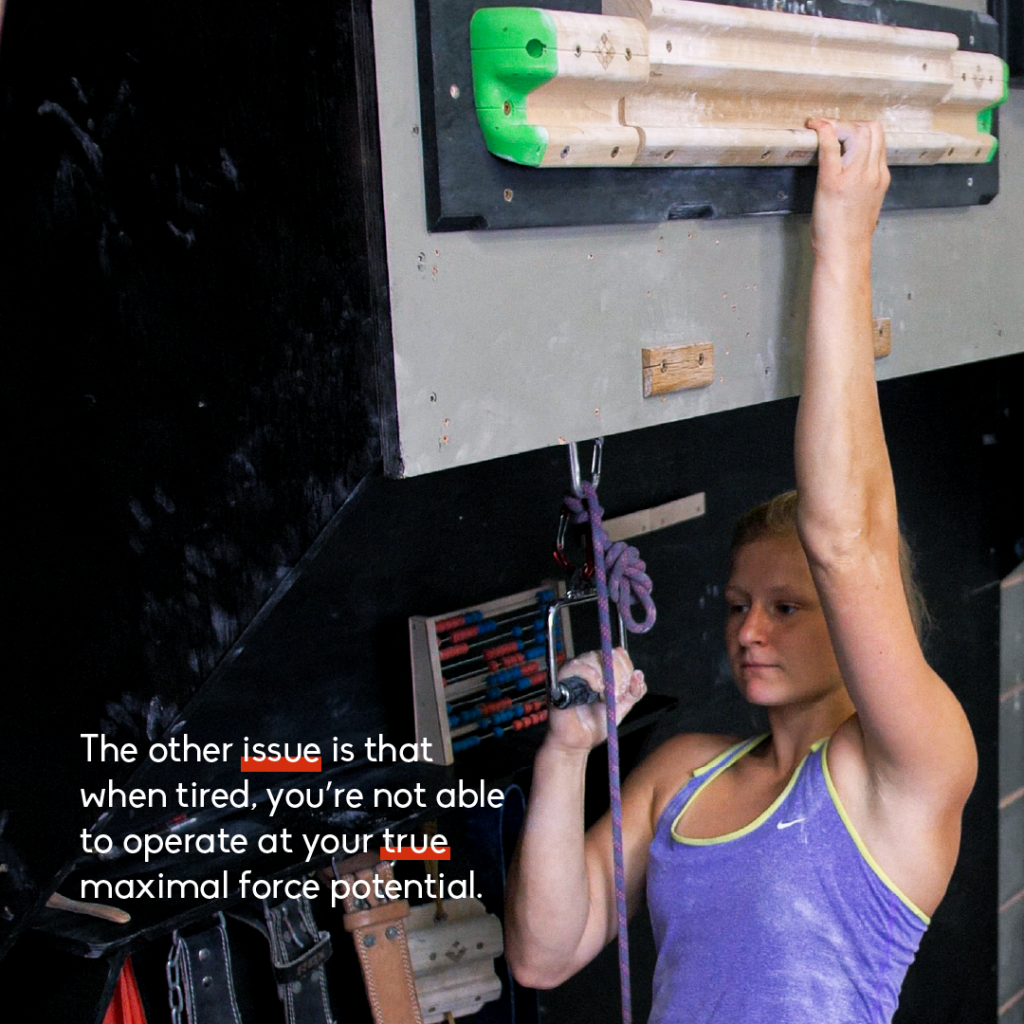
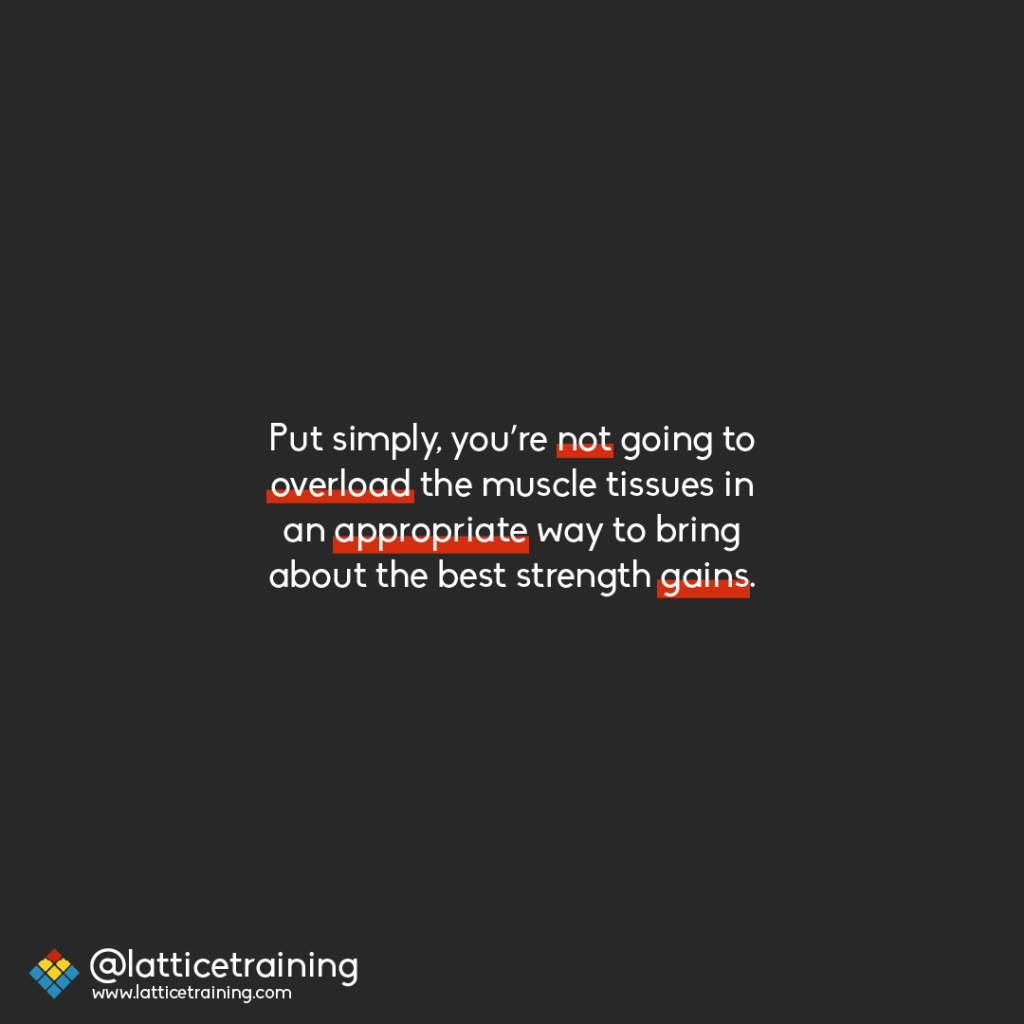
Previous
Next
2 – Rest!!
Taking less than a week of relative rest once a month.
Yes, once a month! We all love climbing, whether it’s training, performing or just doing it for fun. This often means that climbers end up climbing week in, week out, all year long. Every month is a full-on effort of trying our hardest, always doing the same number of sessions and often repeating the same climbing and training habits. Unfortunately, the body doesn’t respond that well to this approach as you become desensitised to the same training stimulus eventually and also you’re never allowing your body and mind time to rest.
Remember, rest is absolutely key – it’s what allows you to get stronger and fitter once you’ve climbed and is the opposite and equally worthwhile side of the “training coin” that we flip each week. If you don’t remember the last time you took some relative rest, we need to talk
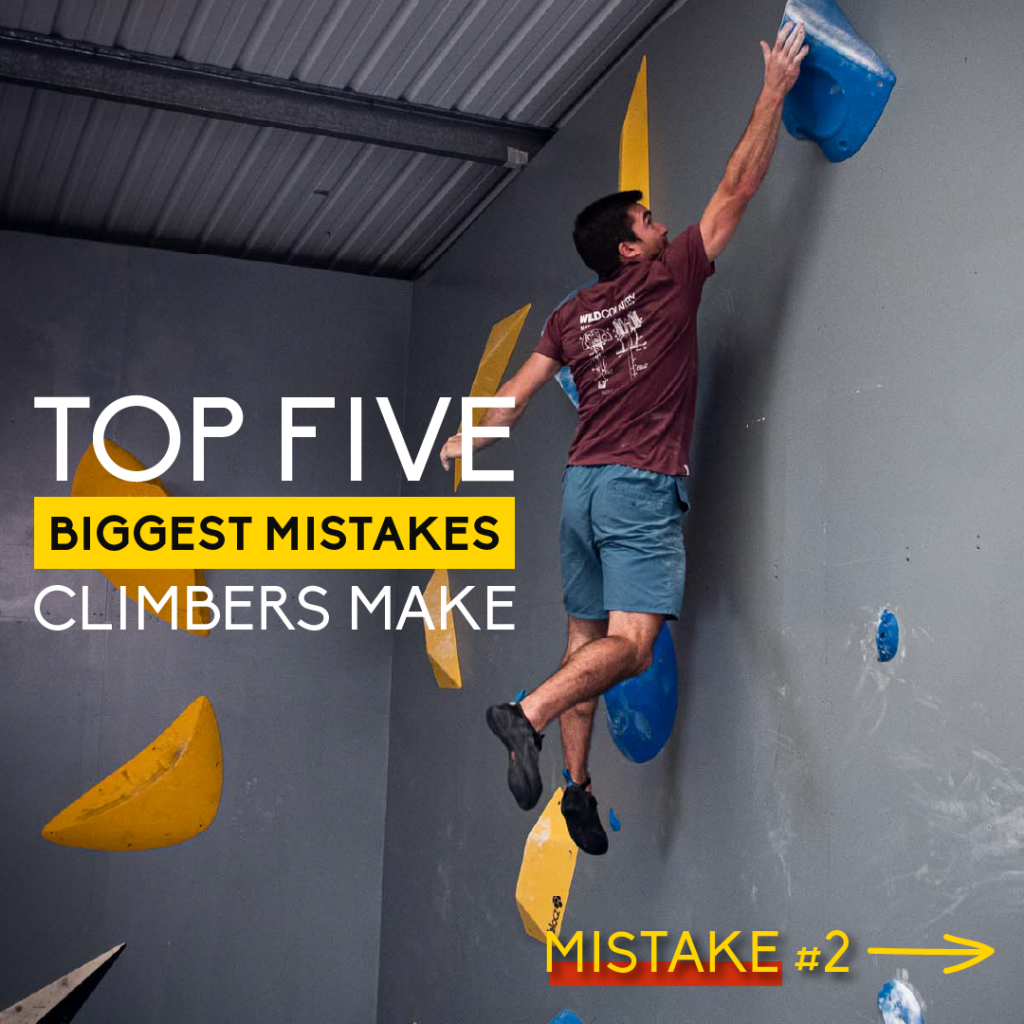
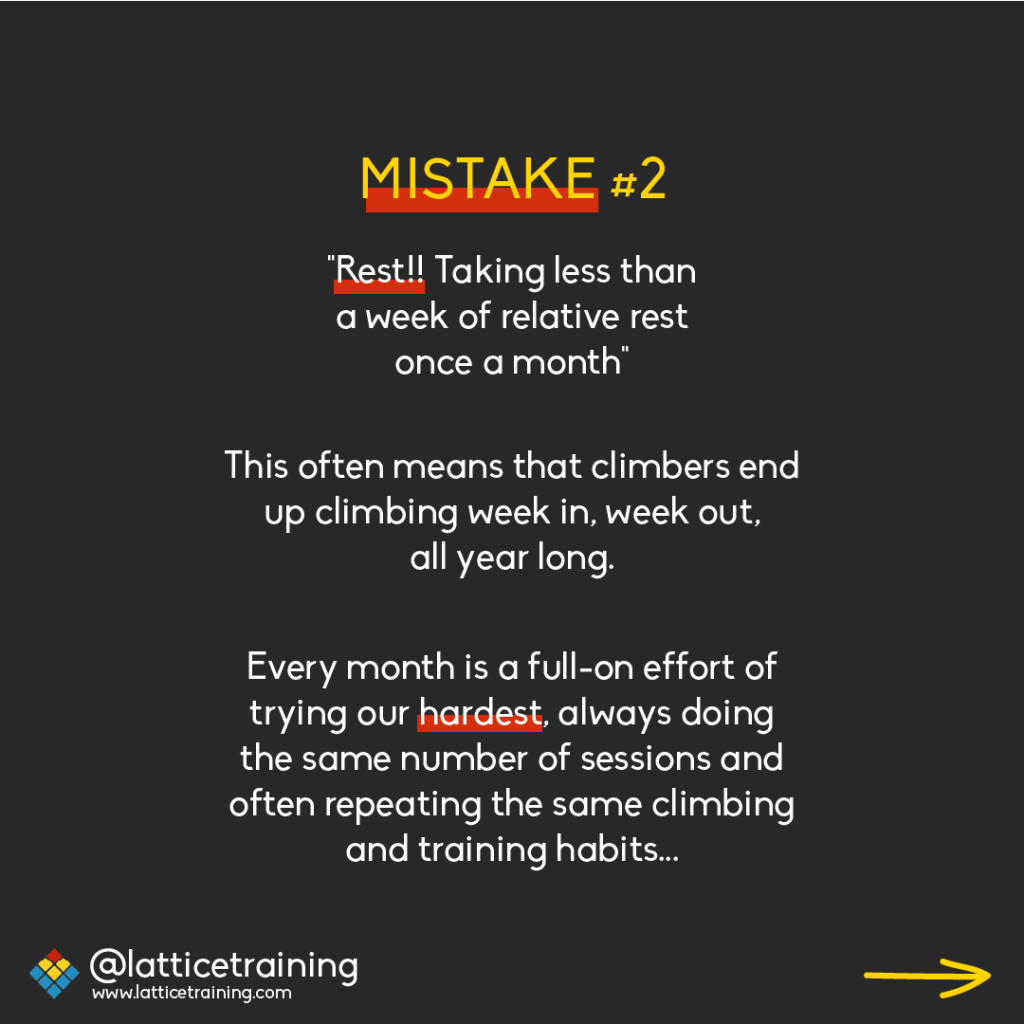
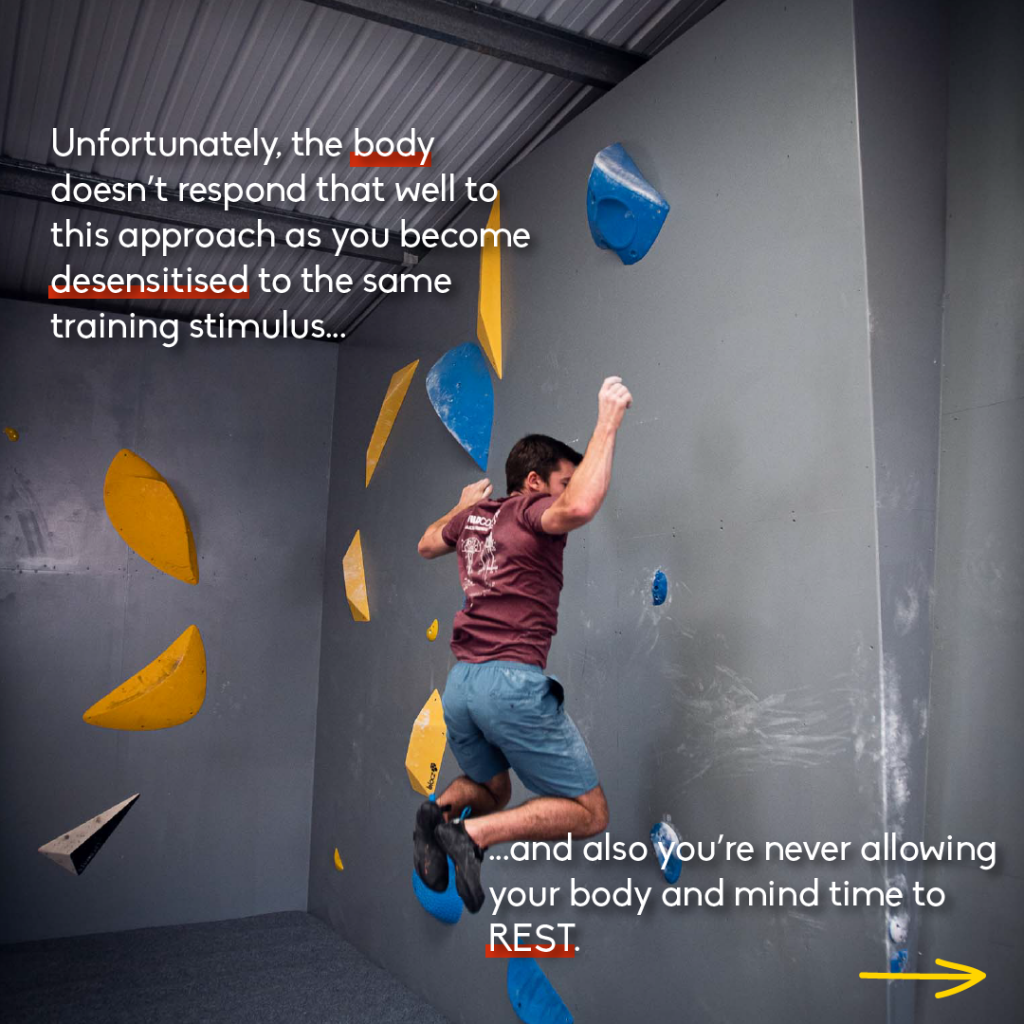
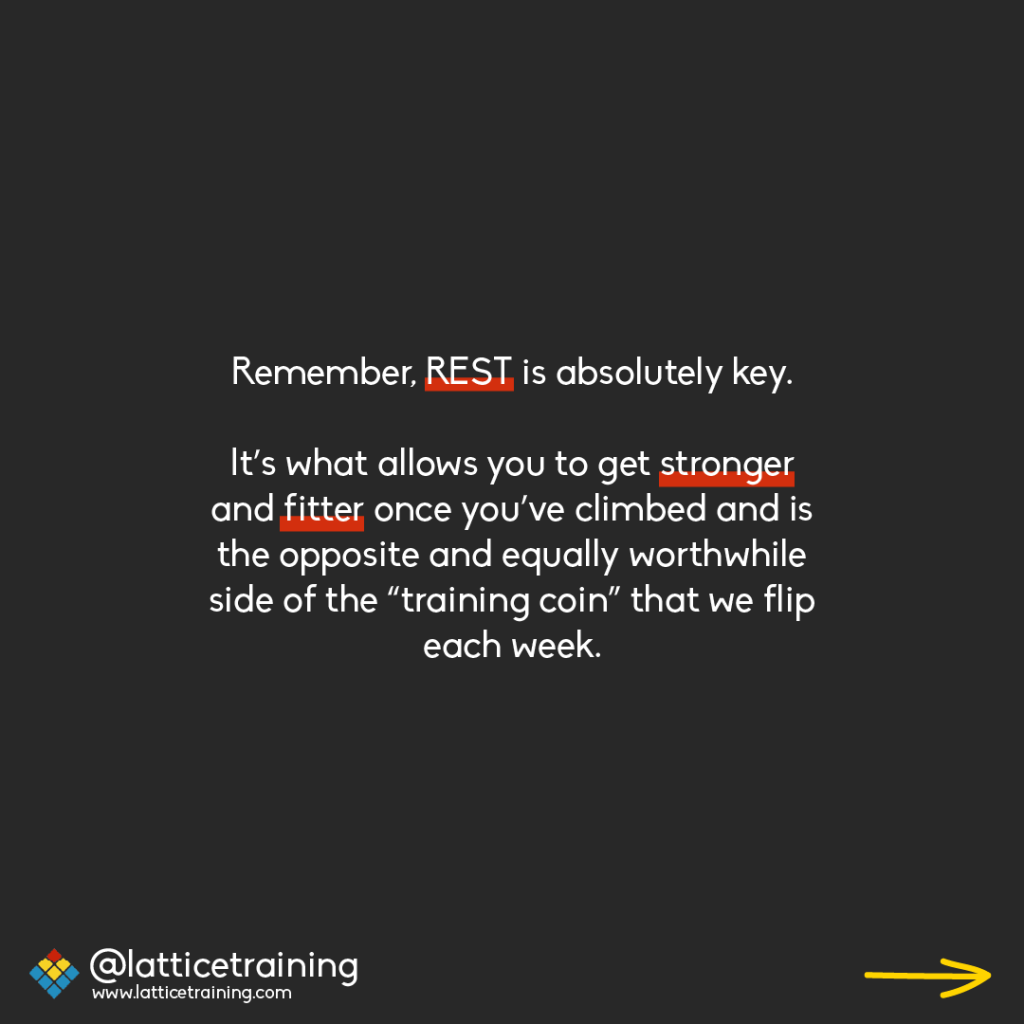
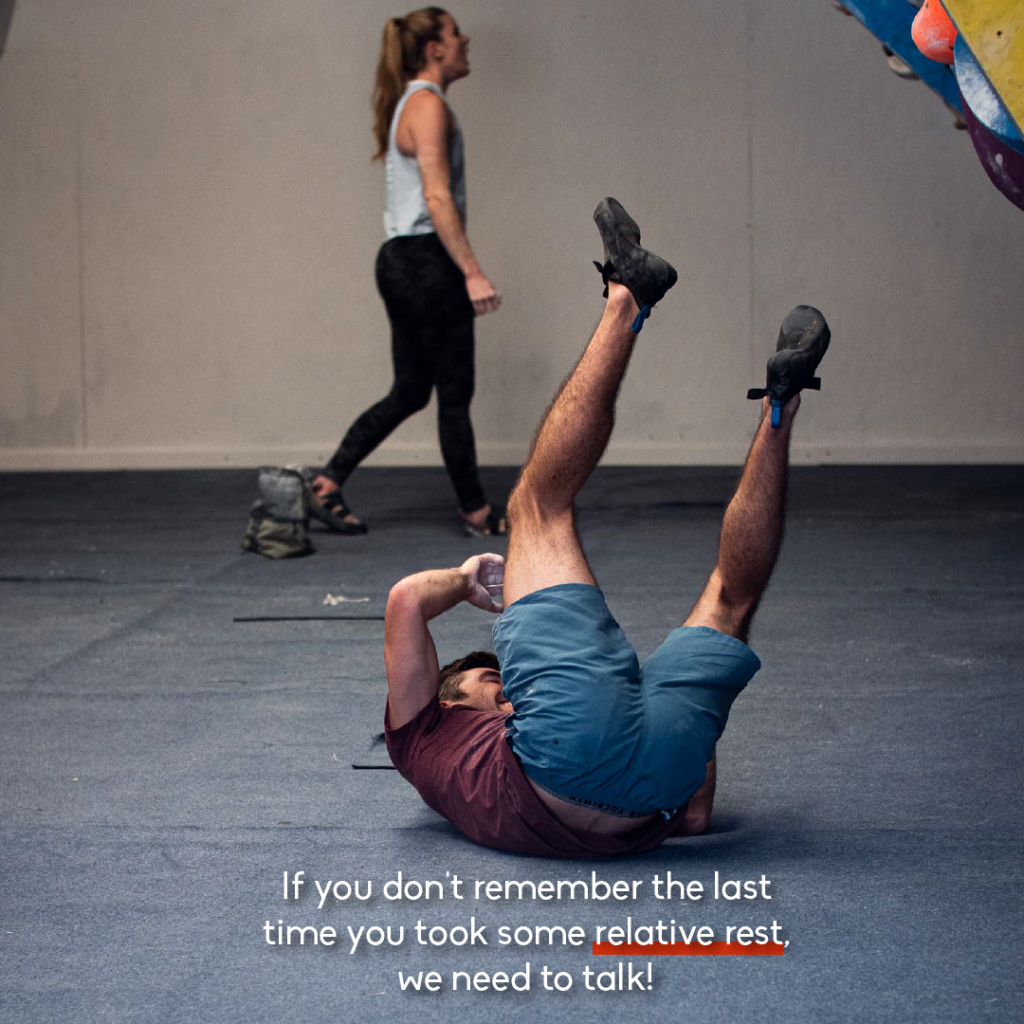
Previous
Next
3 – Overworking!
Working too hard and too often. In the sports industry, there’s a bit of a macho image that we have to “go at it” non-stop, every session, and that more sessions are always better.
This is certainly not the case! Understanding the rewarding balance between easy and hard sessions (and when you do them) is one of the most useful things you can do with your athletic progression.
Intelligent and effective training program design will assign you hard sessions, easy sessions during the week and also hard weeks and soft weeks during the month!
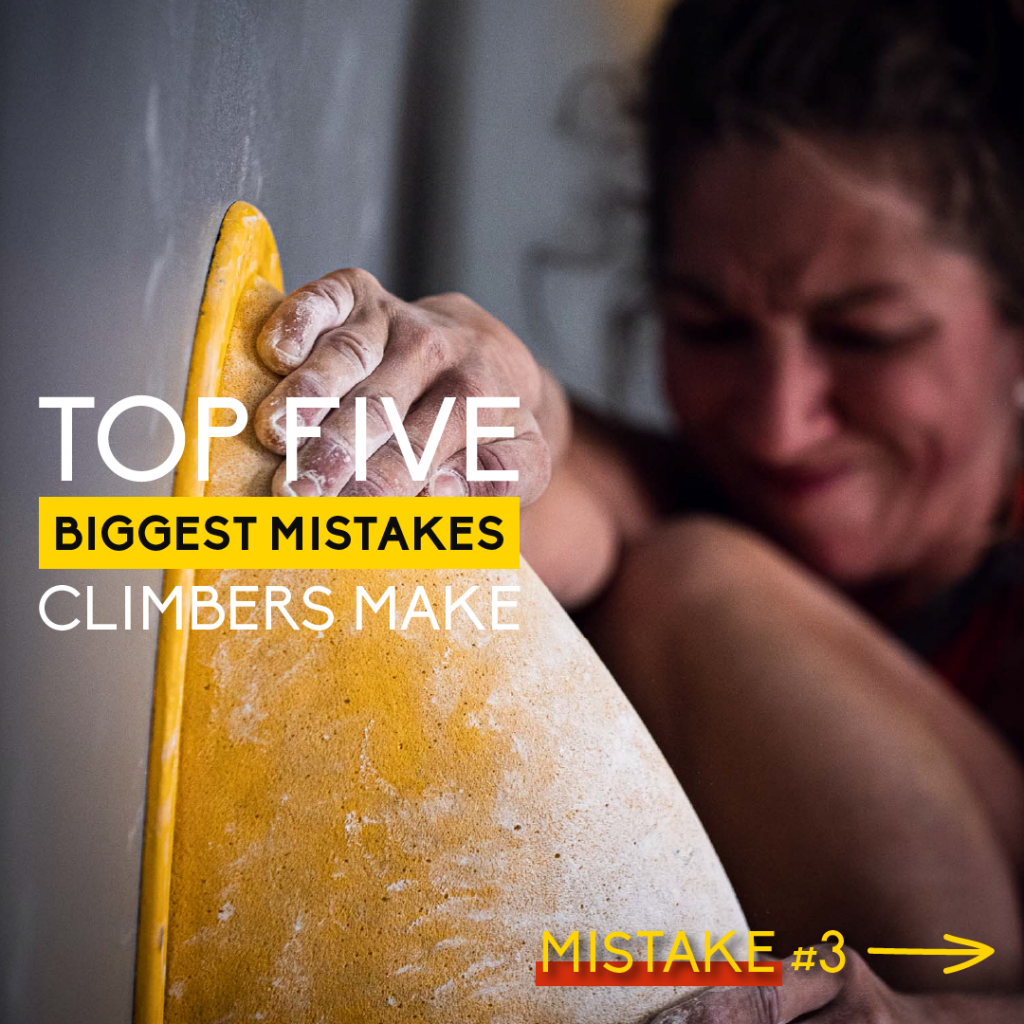
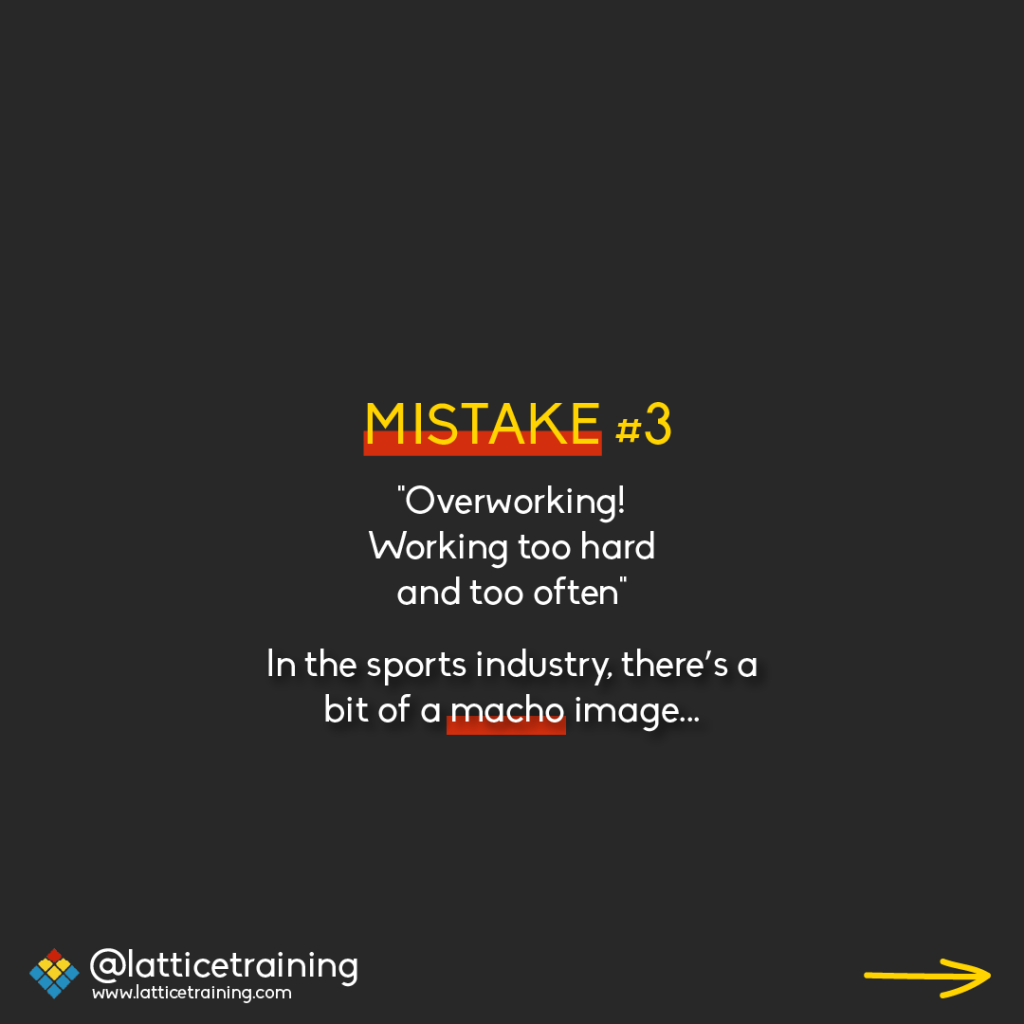
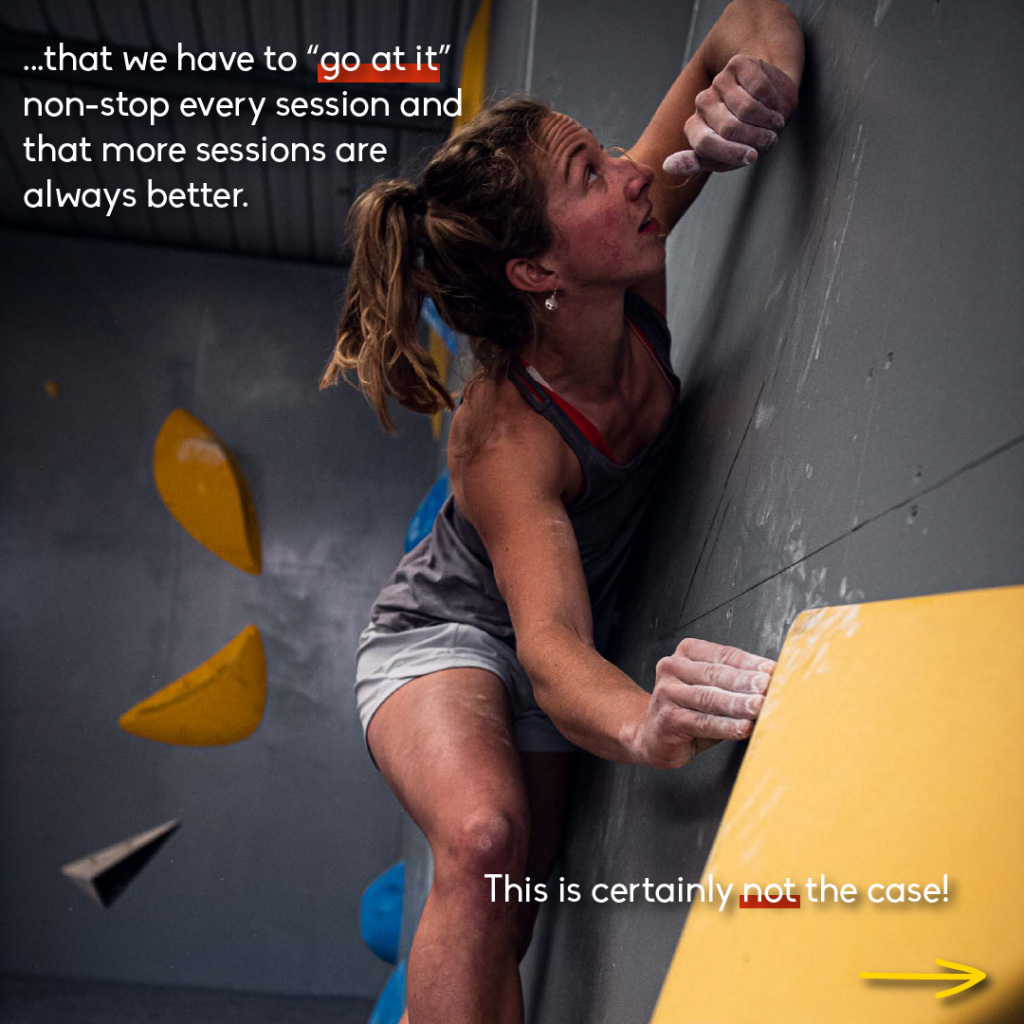
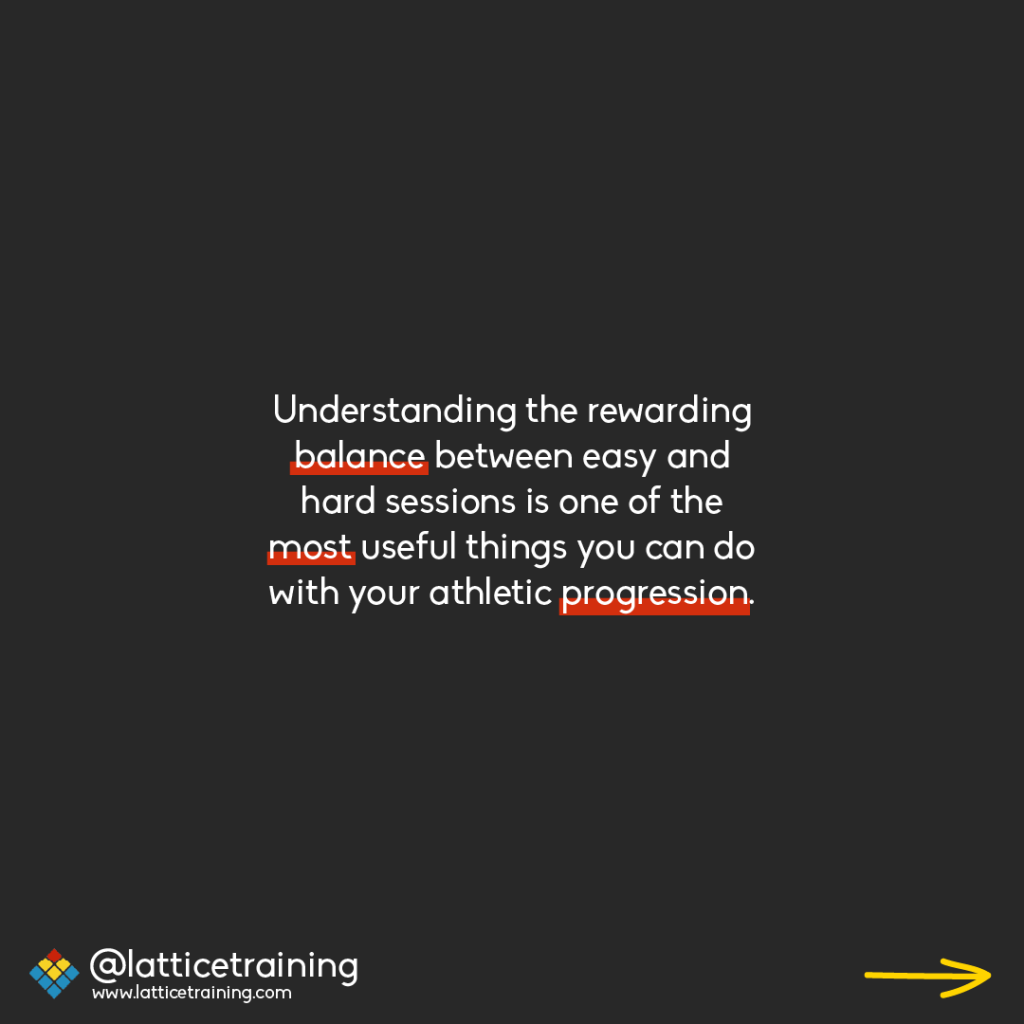
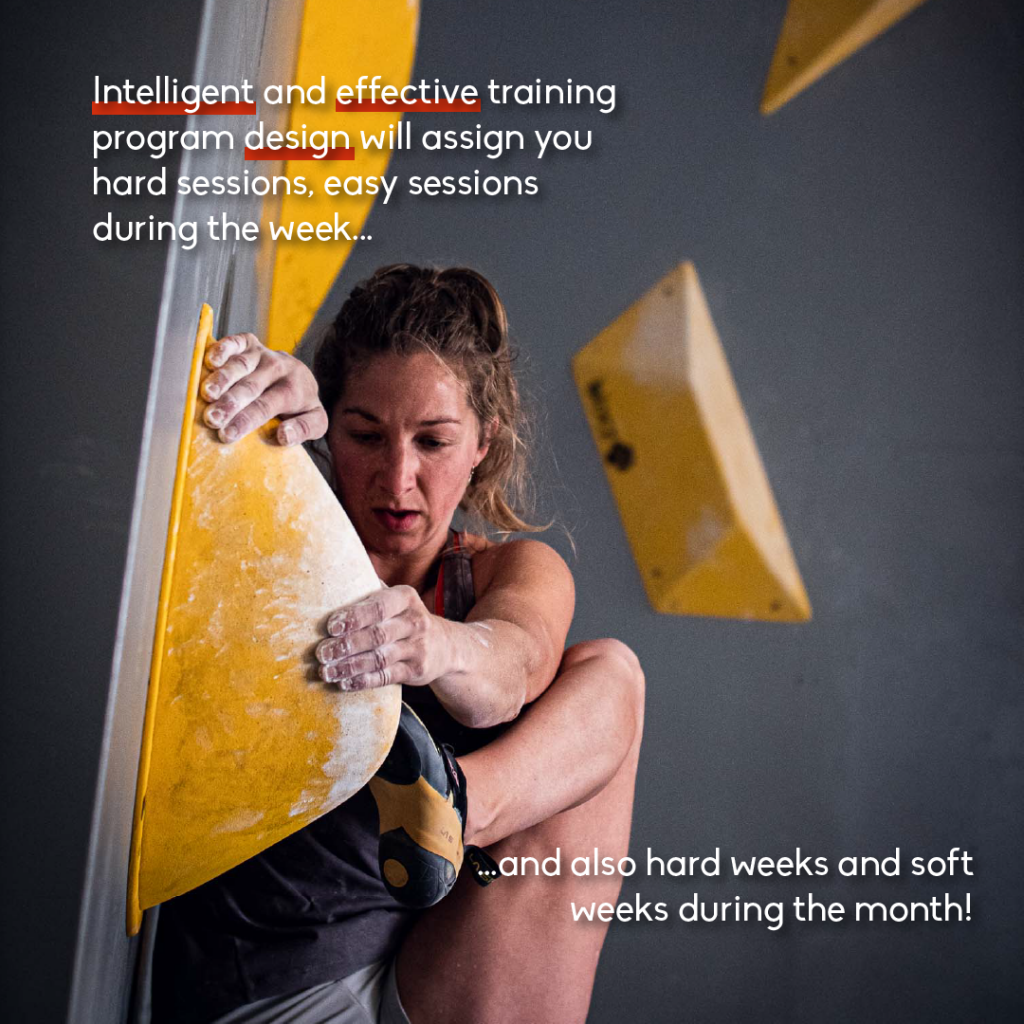
Previous
Next
4 – Training junk mileage in your specialisation!
Every climbing specialisation has training protocols that are valid and useful and others that all much less useful!
There are, of course, some subtleties in this, but whether you’re a boulderer or a route climber, it will have a big impact on what sessions you choose to do (strength endurance training, for example). Tied into this is the timing issue through the year as well, as some sessions are more valid during certain parts of the training cycle.
A classic mistake in this category that we see climbers doing is when route specialists spend all of their off-season training endurance at a mid-intensity where you’re just about in control, but a long way from total max pump or from being able to chat easily on the wall. Think about why you’re doing that session and what you’re aiming to achieve!
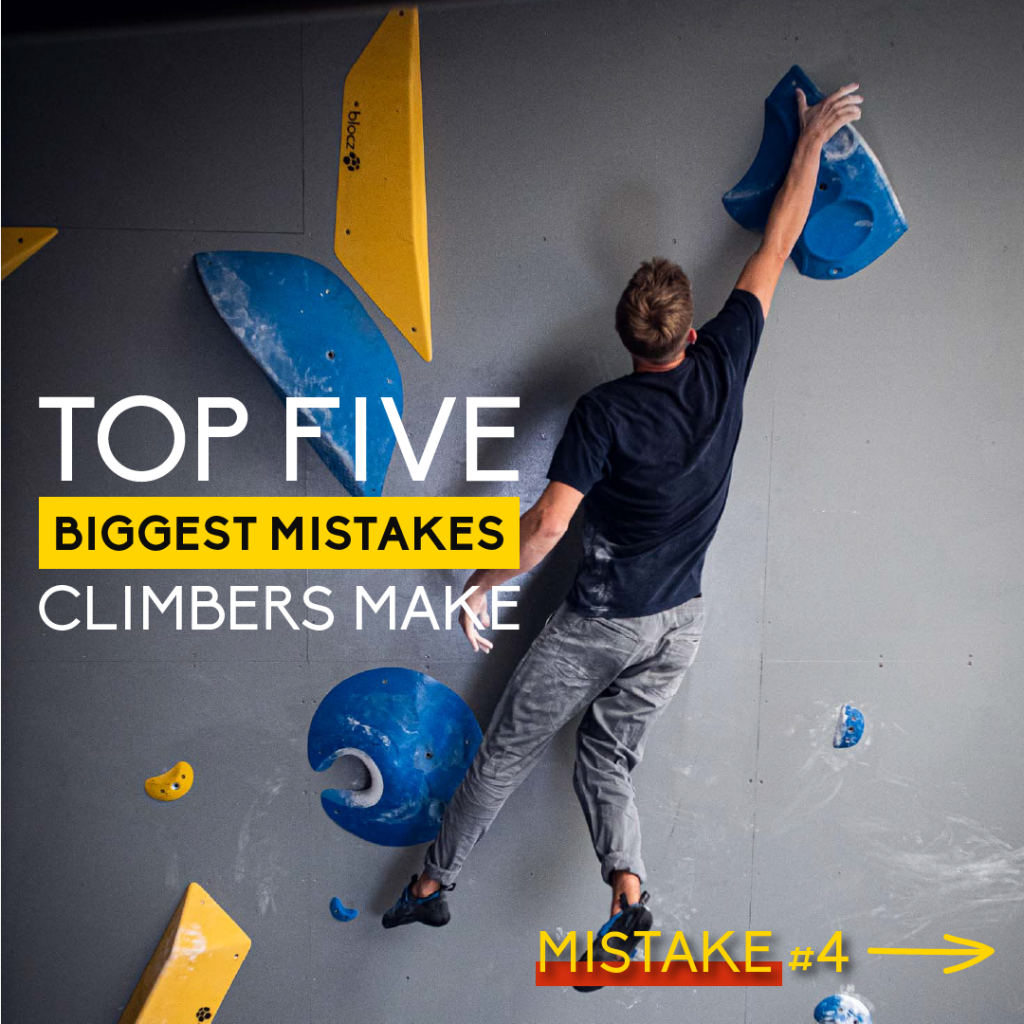
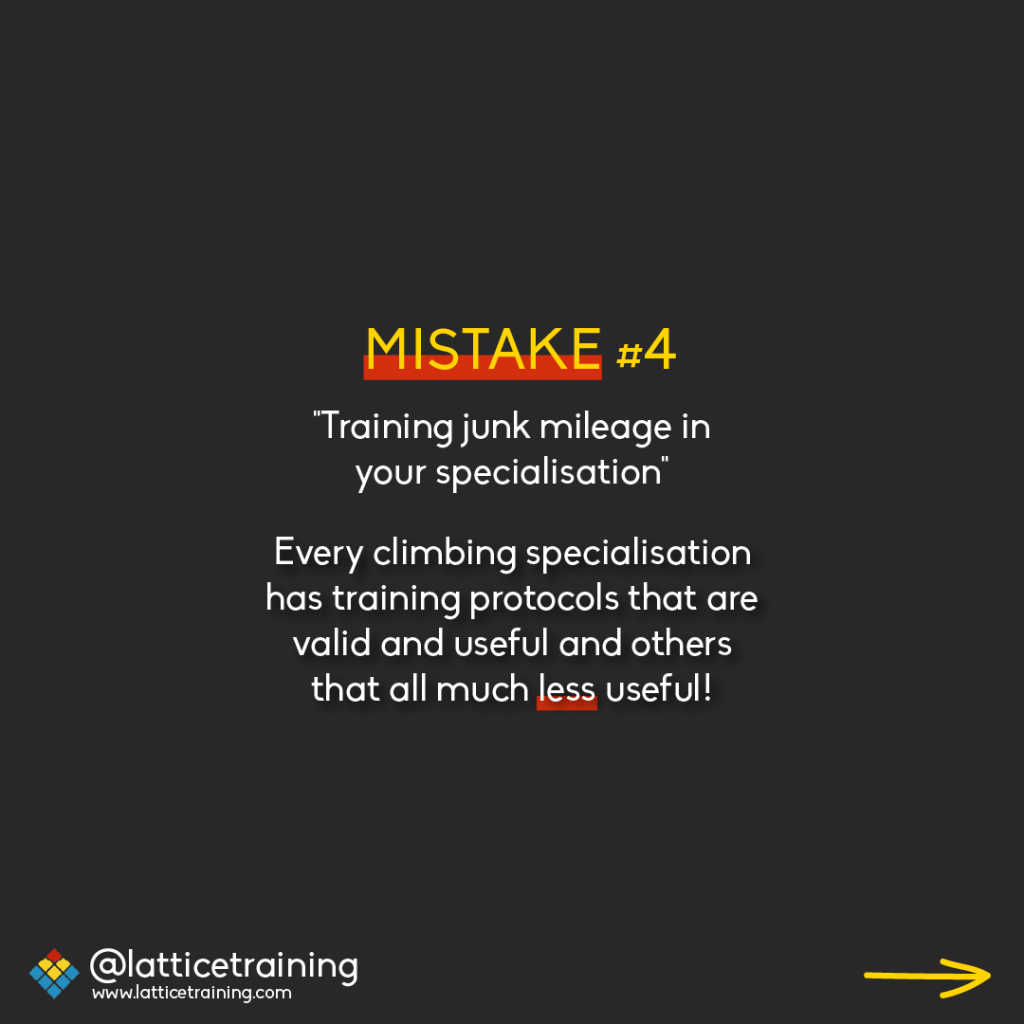
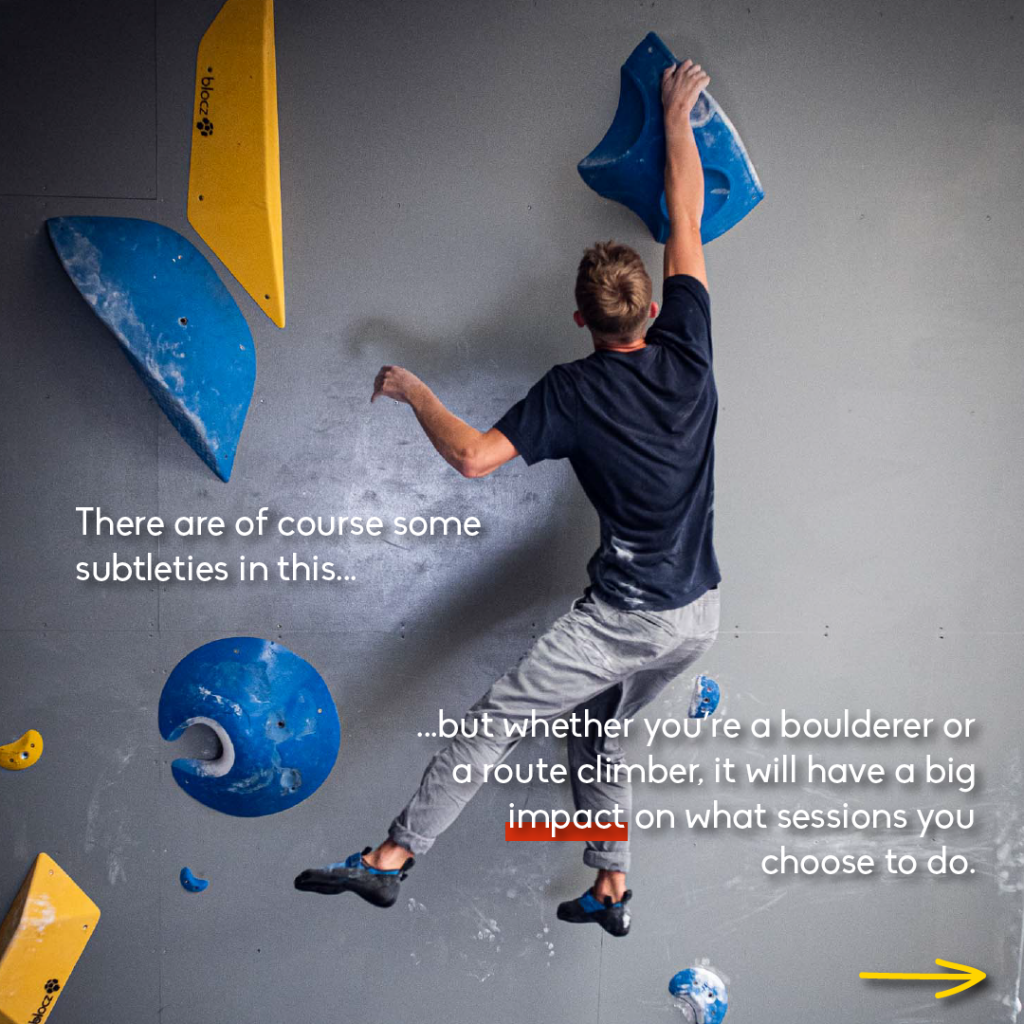

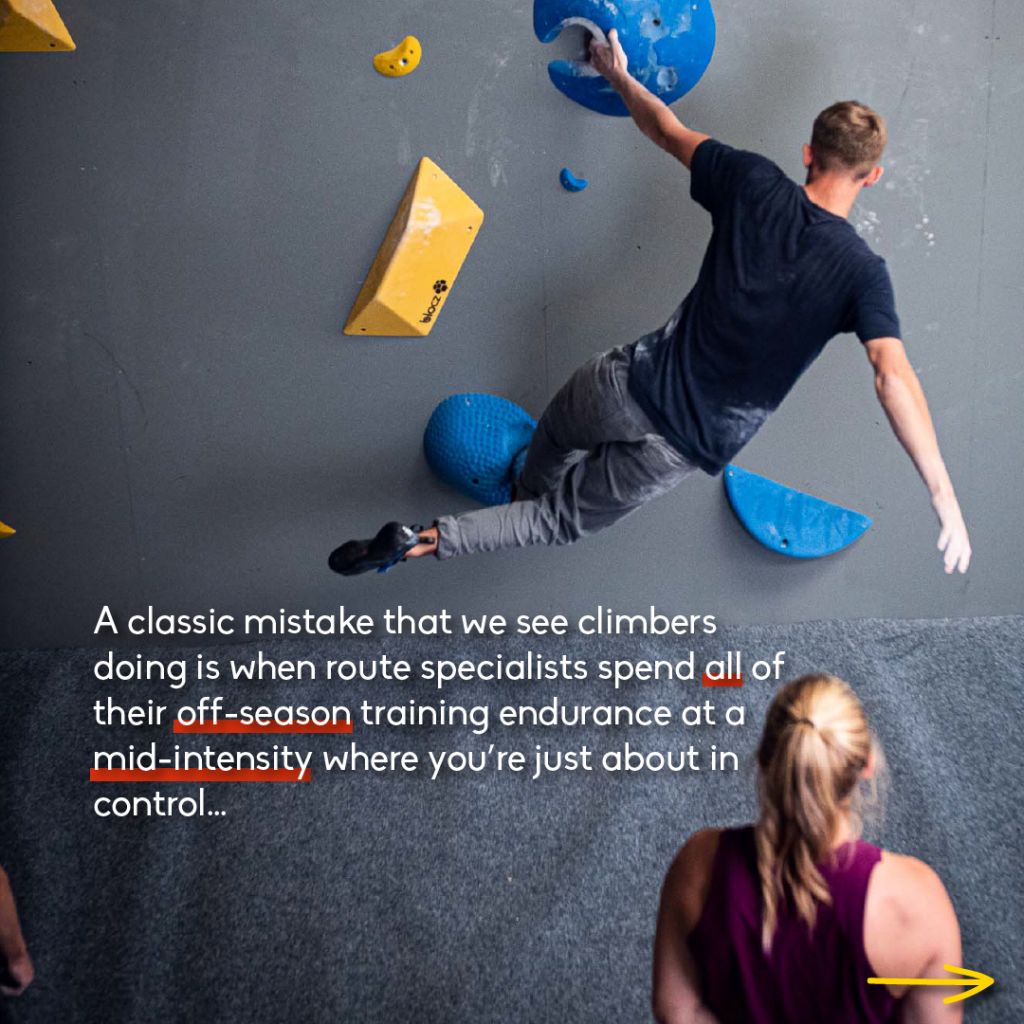
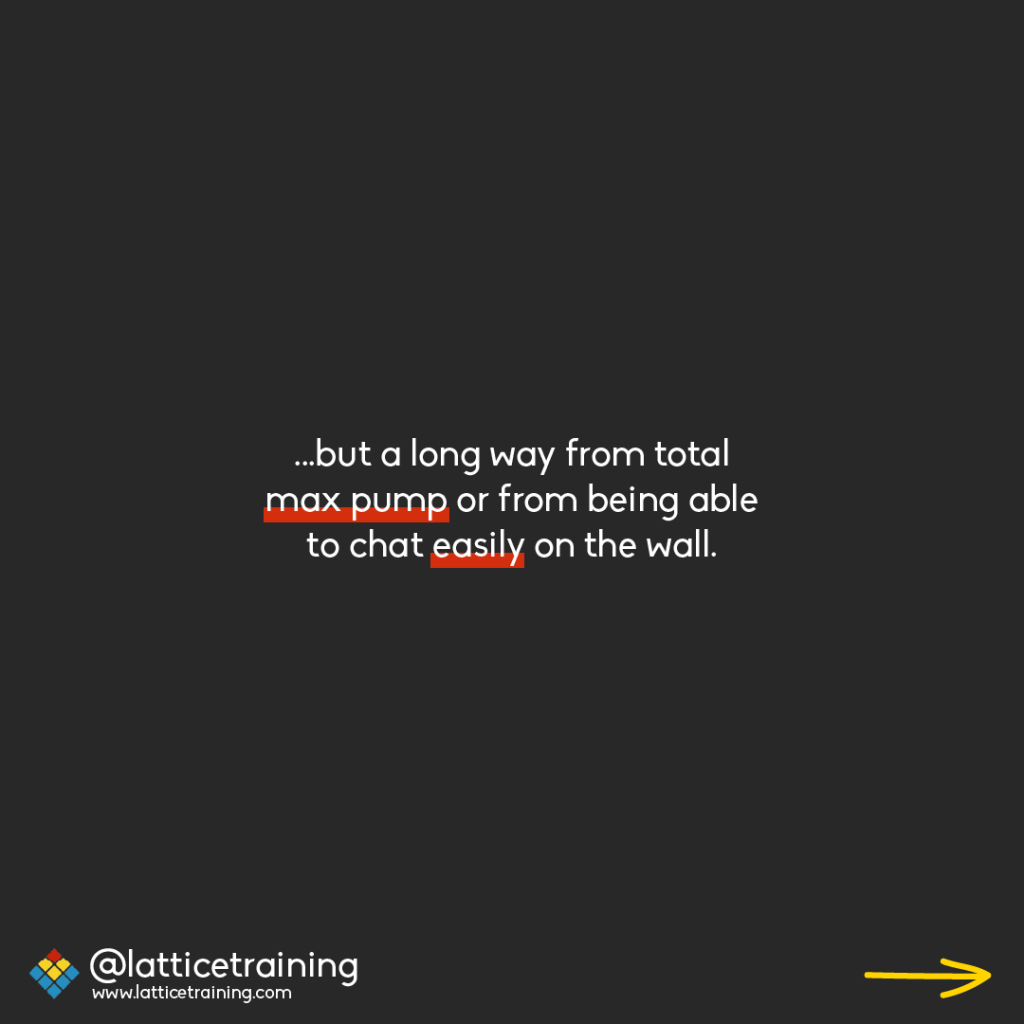
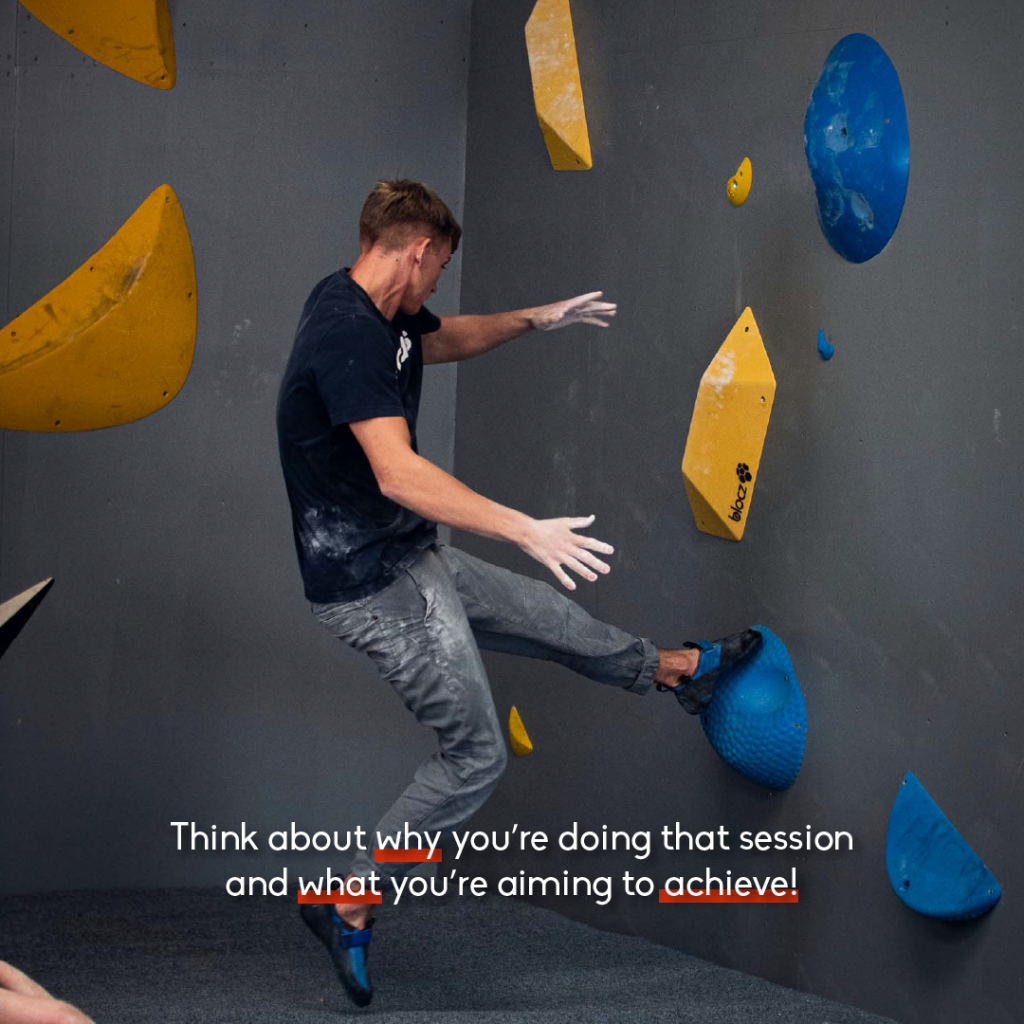
Previous
Next
5 – Climbing on the same angles of terrain.
We all have a preferred style of climbing, which we know we naturally excel at and enjoy. And whilst this is all well and good, interestingly, this also tends to sneak its way into our training habits and sessions.
So, for example, it’s not uncommon to see those “strong for the grade” climbers out there to love training on steep boards! In a training sense, this can be a mistake. When you become so well adapted to performing on certain hold sizes and movement engrams, you could then struggle to effectively transfer training gains onto more vertical walls, slabs and perhaps technical aretes/grooves, for example.
Overall what this means is that the best improvements can be achieved through training and practising on a solid variety of terrain and hold types – we know it takes a bit of thinking about, but trust us, it is well worth it
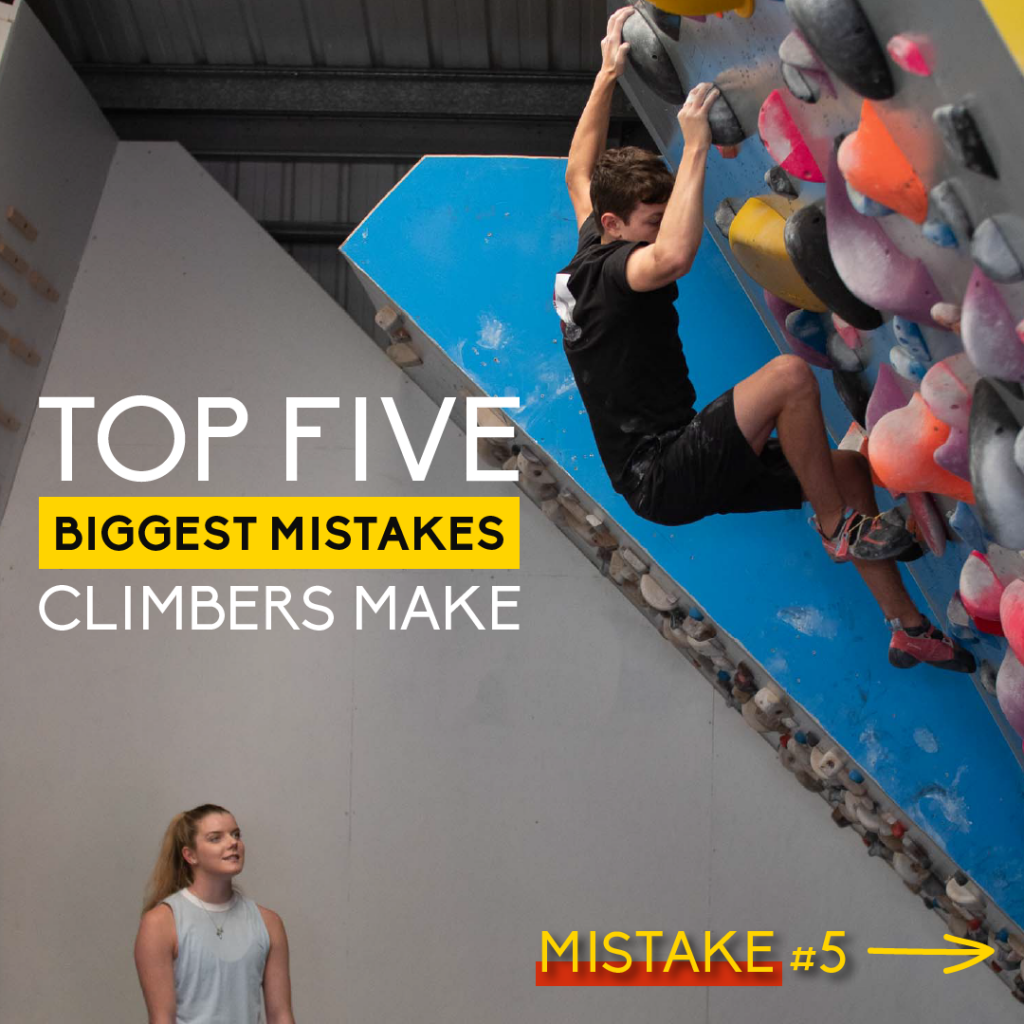
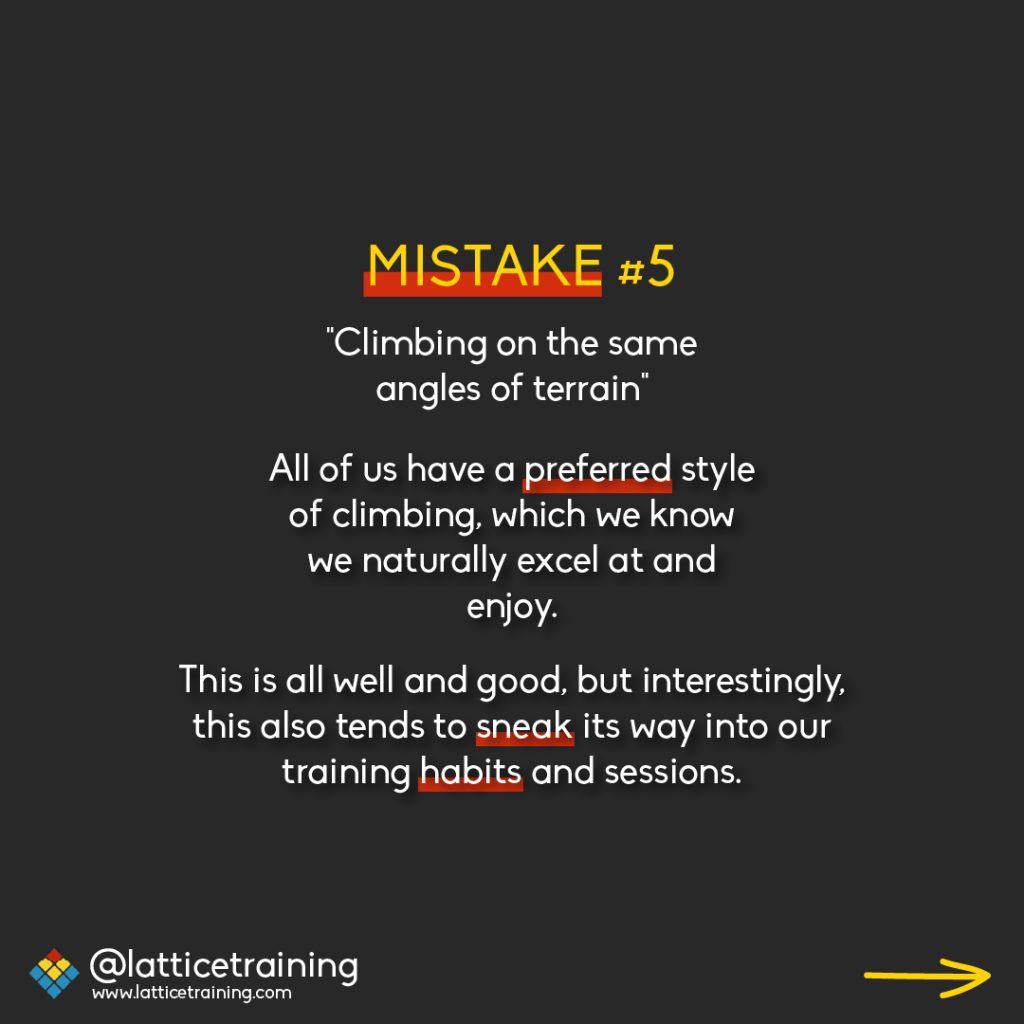

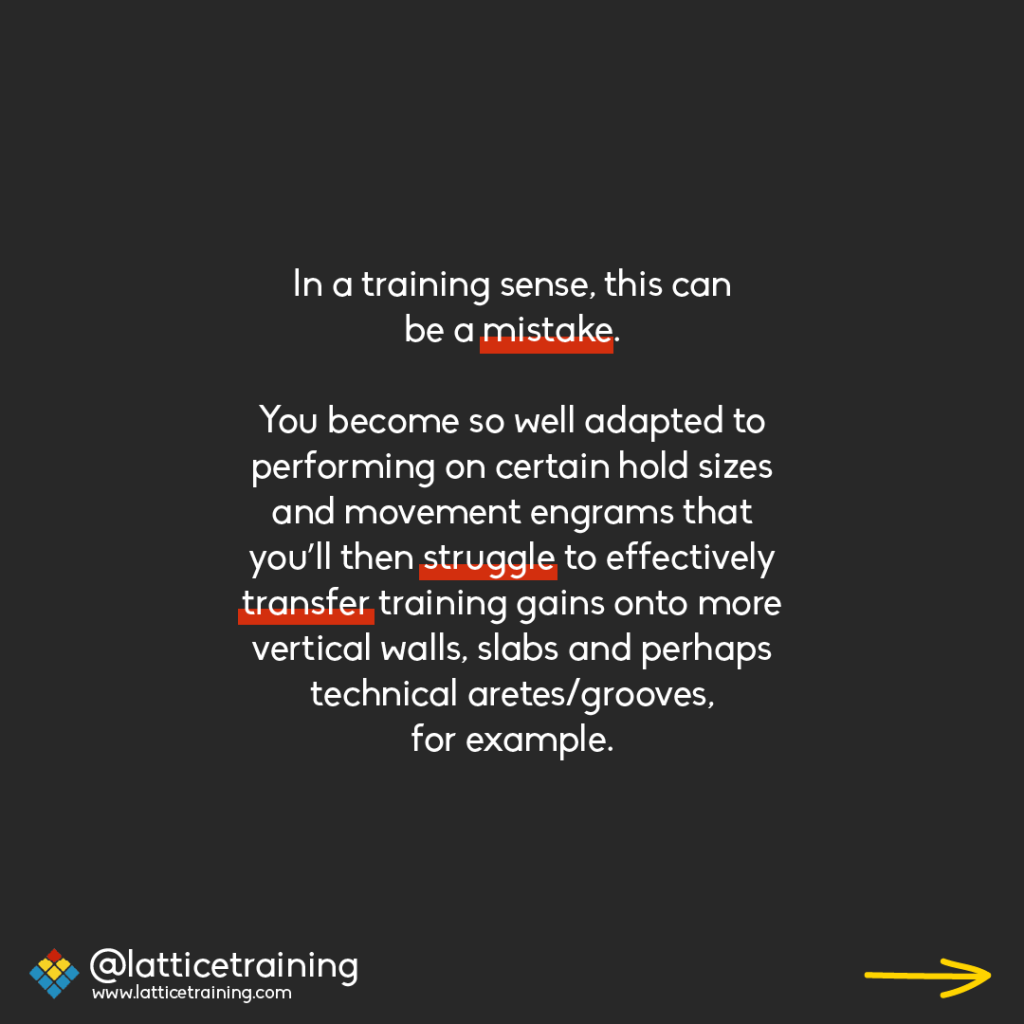

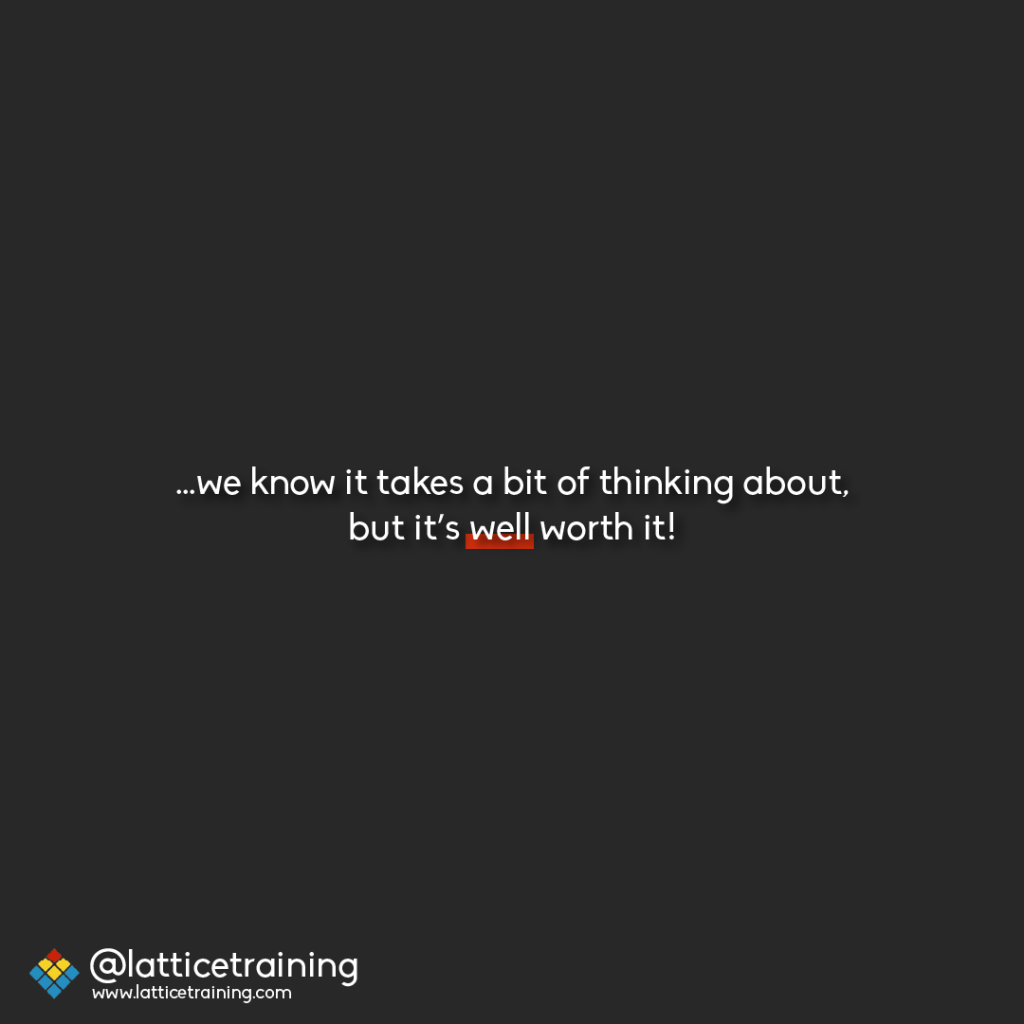
So that concludes our top 5 list of biggest mistakes climbers make. We hope you’ve enjoyed it and taken some value away.
If you are finding yourself unsure or not hitting the goals and gains you expect, then there is always time to get a personalised climbing training plan.





